List of recorded datu in the Philippines
The datu have ruled over portions of the islands that are now the Philippines before Spanish colonization in the 16th century. This article lists the pre-colonial leaders of individual kingdoms and polities in Philippine history.
Huangdom of Ma-i State
| Name | Image | Title held | From | Until |
|---|---|---|---|---|
| Gat Sa Li-han | 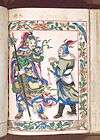 | "王" Huang (King) according to Chinese records | 1225? | ? |
| Ruler | Events | From | Until |
|---|---|---|---|
| Kamayin | Tribute of silver and horses to China | 1406 | 1408 |
| Taymey | Embassy to China formally established | 1408 | 1409 |
| Liyu | 1409 | ? | |
| Chinese Emperor holds a banquet in honor Pangasinan | December 11, 1411 | ||
| Warrior-Princess Udaya | The Huangdom enjoys prosperity | 16th century | |
| Chinese Warlord Limahong | Pangasinan is sacked and a pirate-enclave is established | 1575 | |
| Conquistador Juan de Salcedo | Pirates were repulsed and Pangasinan is incorporated into the Spanish Empire | 1575–1576 | |
Tondo Dynasty
| Name | Image | Title held | From | Until |
|---|---|---|---|---|
| Jayadeva | 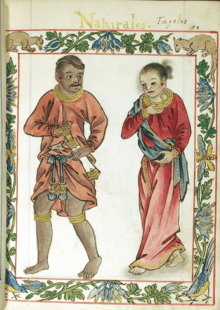 | Senapati (analogous to "admiral") | 900? | ? |
| Timamanukum | Lakan Timamanukum | 1150? | ? | |
| Alon | 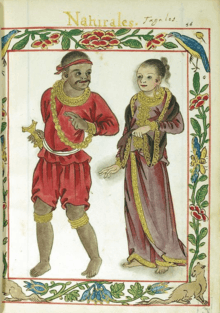 | Lakan Alon | 1200? | ? |
| Gambang | Lakan Gambang | 1390? | 1417? | |
| Suko | Lakan Suko | 1417? | 1430? | |
| Lontok | Rajah Lontok | 1430? | 1450? | |
| Kalangitan | Dayang Kaylangitan, Queen of Namayan and Tondo | 1450? | 1515? | |
| Salalila | Rajah Salalila or Rajah Sulayman I | 1515? | 1558? | |
| Matanda | 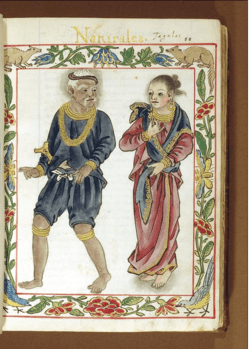 | Rajah Matanda or Rajah Sulayman II or Rajah Ache, King of Namayan | 1558? | 1571 |
| Lakan Dula | Banaw Lakandula, King of Tondo and Sabag | 1558? | 1571 | |
| Sulayman | Rajah Sulayman III, King of Tondo | 1571 | 1585 | |
| Magat Salamat | 1575 | 1587 | ||
| Pre-hispanic History of the Philippines |
 |
|---|
| Barangay government |
| Ten datus of Borneo |
| States in Luzon |
| Luyag na Kaboloan (Pangasinan) |
| Ma-i |
| Kingdom of Maynila |
| Namayan |
| Kingdom of Tondo |
| States in the Visayas |
| Kedatuan of Madja-as |
| Rajahnate of Cebu |
| States in Mindanao |
| Rajahnate of Butuan |
| Sultanate of Sulu |
| Sultanate of Maguindanao |
| Sultanate of Lanao |
| Key figures |
| Sulaiman II · Lakan Dula · Sulaiman III · Katuna |
| Tarik Sulayman · Tupas · Kabungsuwan · Kudarat |
| Humabon · Lapu-Lapu · Alimuddin I · Muedzul Lail Tan Kiram |
| History of the Philippines |
| Portal: Philippines |
The Datus of Madja-as
| Commander-In-Chief | Image | Jurisdiction | From | Until |
|---|---|---|---|---|
| Datu Puti | Aklan | 13th century | 1212 | |
| Datu Sumakwel | Malandong (today in Antique) | 1213 | ? | |
| Datu Bangkaya | Aklan | ? | ? | |
| Datu Paiburong | Irong-Irong | ? | ? | |
| Datu Balengkaka | Aklan | ? | ? | |
| Datu Kalantiaw | Batan | 1365 | 1437 | |
| Datu Manduyog | Batkcan | 1437 | ? | |
| Datu Padojinog | Irong-Irong, now Iloilo | ? | ? | |
| Datu Kabnayag | Kalibo | ? | 1565 | |
| Datu Lubay | San Joaquín | ? | ? |
Rulers of the Maynila
| Name | From | Until |
|---|---|---|
| Sultan Bolkiah | 1500 | ? |
Monarchs of the Butuan Kingdom
| The Royal Title of the Reigning Rajah | Image | Events | From | Until |
|---|---|---|---|---|
| Rajah Kiling | The Embassy of I-shu-han (李竾罕) | 989 | 1009 | |
| Sri Bata Shaja | Mission by Likanhsieh (李于燮) | 1011 | ? | |
| Rajah Siagu | Annexation by Ferdinand Magellan | ? | 1521 | |
Raja's of Cebu
| The Royal Title of the Reigning Rajah | Image | Events | From | Until |
|---|---|---|---|---|
| Sri Lumay | ? | |||
| Rajah Humabon | Annexation by Ferdinand Magellan | ? | ||
| Rajah Tupas | Spanish Period | |||
Sultans of Maguindanao
| Reign | Sultan | Other name(s) | |
|---|---|---|---|
| 1520–1543 | Shariff Kabungsuwan | A Johore (Singapore) Makdum Prince who fled to Malabang Lanao and seated as Sharif Kabungsuwan. Married the daughter of Chieftain Aliwya of the Maguindanao family clan at Dulawan, Cotabato. Took over the father inlaw's political powers establishing the Sultanate of Maguindanao later called by the Spanish as Mindanao. He is the second Makdum known as Karim Ul-Makdum who reinforced Islam and His brother Sulu Sultan Shariful Hashim promulgated Kor'anic studies or Madrassahs.
The said Sharif is buried at Simunul Island Tamppat. | |
| 1543–1574 | Sultan Maka-alang Saripada | ||
| 1574–1578 | Sultan Bangkaya | ||
| 1578–1585 | Sultan Dimasangcay Adel | ||
| 1585–1597 | Sultan Gugu Sarikula | Datu Salikala | |
| 1597–1619 | Sultan Laut Buisan | Datu Katchil | |
| 1619–1671? | Sultan Muhammad Dipatuan Kudarat | Datu Qudratullah Katchil | |
| 1671?–1678? | Sultan Dundang Tidulay | Sultan Saif ud-Din (Saifud Din) | |
| 1678?–1699 | Sultan Barahaman | Sultan Muhammad Shah Minulu-sa-Rahmatullah | |
| 1699–1702 | Sultan Kahar ud-Din Kuda | Maulana Amir ul-Umara Jamal ul-Azam | |
| 1702–1736 | Sultan Bayan ul-Anwar { Maruhom Batua } | Dipatuan Jalal ud-Din Mupat Batua (posthumously) | |
| 1710–1736 (in Tamontaka) | Sultan Amir ud-Din | Paduka Sri Sultan Muhammad Jafar Sadiq Manamir Shahid Mupat (posthumously) | |
| 1736–1748 (in Sibugay, Buayan, Malabang) | Sultan Muhammad Tahir ud-Din | Dipatuan Malinug Muhammad Shah Amir ud-Din | |
| 1733–1755 (paramount chief of Maguindanao by 1748) | Sultan Rajah Muda Muhammad Khair ud-Din | Pakir Maulana Kamsa Amir ud-Din Itamza Azim ud-Din Amir ul-M'umimin | |
| 1755–1780? | Sultan Pahar ud-Din | Datu Panglu/Pongloc Mupat Hidayat (posthumously) | |
| 1780?–1805? | Sultan Kibad Sahriyal | Muhammad Azim ud-Din Amir ul-Umara | |
| 1805?–1830? | Sultan Kawasa Anwar ud-Din | Muhammad Amir ul-Umara Iskandar Jukarnain | |
| 1830–1854 | Sultan Qudratullah Untung | Iskandar Qudratullah Muhammad Jamal ul-Azam Iskandar Qudarat Pahar ud-Din. Properly place, his name was Ullah Untong and seated as Sultan Ashrf Samalan Farid Quadratullah or better known as Sultan Qudarat. www.royalsultanate.weebly.com | |
| 1854–1884 | Sultan Muhammad Makakwa | ||
| 1884–1888 | Sultan Wata | Sultan Muhammad Jalal ud-Din Pablu | |
| 1888–1896 | No sultan Sultan Anwar ud-Din contested Datu Mamaku (son of Sultan Qudratullah Untung) of Buayan for the throne versus the then sultan Datu Mangigin of Sibugay. | ||
| 1896–1898 | Sultan Taha Colo | Sultan Rabago sa Tiguma | |
| 1908–1933 | Sultan Mastura Kudarat | Sultan Muhammad Hijaban Iskandar Mastura Kudarat, Sultan Mastura | |
The Sultans of Sulu (1405–present)
| Sultans | Image | From | Until |
|---|---|---|---|
| Sharif ul-Hashim of Sulu |  | 1480 | 1505 |
| Sultan Kamalud-Din |  | 1505 | 1527 |
| Sultan Amirul-Umara |  | 1893 | 1899 |
| Jamal ul-Kiram I |  | 1893 | 1899 |
| Mahakuttah Kiram | 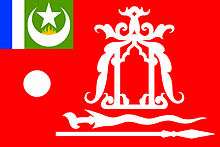 | 1974 | 1986 |
| Muedzul Lail Tan Kiram |  | 1986 | |
Datus in the Maragtas epic
- Datu Kalantiaw III /Rajah Bendahara Kalantiaw, according to the local oral tradition of Panay, is said to have enacted a body of laws, which is now called the Code of Kalantiaw in 1433.
- Datu Puti – One of the 10 Bornean Datus to arrive in Iloilo before the Spanish colonization.
- Datu Sumakwel – Leader of the 10 Bornean Datus. He settled in Antique.
- Datu Bangkaya
- Datu Paiburong
- Datu Marikudo – the Ati (Aeta) Datu of Panay, from whom the 10 Bornean Datus purchased the lowlands of the Island, in exchange for a golden Salakot (Bulawan nga Saduk), and a long pearl necklace that could touch the ground (Manangyad).
Datus during the Spanish colonization
- Rajah Colambu – King of Limasawa in 1521, brother of Rajah Siagu of Butuan. He befriended Portuguese explorer Ferdinand Magellan and guided him to Cebu on April 7, 1521.
- Rajah Humabon – King of Cebu who became an ally of Ferdinand Magellan and the Spaniards. Rival of Datu Lapu-Lapu. In 1521, he and his wife were baptized as Christians and given Christian names Carlos and Juana after the Spanish royalty, King Carlos and Queen Juana.
- Sultan Kudarat – Sultan of Maguindanao.
- Lakan Dula or Lakandula – King of Tondo, one of the last princes of Manila.
- Datu Lapu-Lapu – King of Mactan Island. He defeated the Spaniards on April 27, 1521.
- Datu Sikatuna – King of Bohol in 1565. He made a blood compact with Spanish explorer, Miguel López de Legazpi.
- Datu Pagbuaya – King of Bohol. He governed with his brother Datu Dailisan, a settlement along the shorelines between Mansasa, Tagbilaran and Dauis, which was abandoned years before the Spanish colonization due to Portuguese and Ternatean attacks. He founded Dapitan in the northern shore of Mindanao.
- Datu Dailisan – King of Mansasa, Tagbilaran and Dauis and governed their kingdom along with his brother Datu Pagbuaya. His death during one of the Portuguese raids caused the abandonment of the settlement.
- Datu Manooc – Christian name – Pedro Manuel Manooc, son of Datu Pagbuaya who converted to Christianity, defeated the Higaonon tribe in Iligan, Mindanao. He established one of the first Christian settlements in the country.
- Datu Macabulos – King of Pampanga in 1571.
- Rajah Siagu – King of the Manobo in 1521.
- Apo Noan – Chieftain of Mandani (present day Mandaue) in 1521.
- Apo Macarere – Famous Chieftain of the Tagbanwa warrior tribe in Corong Island (Calis).
- Rajah Sulaiman III – One of the last King of Manila, was defeated by Martín de Goiti, a Spanish soldier commissioned by López de Legazpi to Manila.
- Rajah Tupas – King of Cebu, conquered by Miguel López de Legazpi.
- Datu Urduja – Female Leader in Pangasinan.
- Datu Zula – Chieftain of Mactan, Cebu. Rival of Lapu-lapu
- Datu Kalun – Ruler of the Island of the Basilan and the Yakans in Mindanao, converted his line to Christianity
- Datu Sanday – Ruler of Marawi City
- Datu Saiden Borero – King of Antique
- unnamed Datu – King of Taytay Palawan. Mentioned by Pigafetta, chronicler of Magellan. The king, together with his wife were kidnapped by the remnant troops from Magellan's fleet after fleeing Cebu to secure provisions for their crossing to the Moluccas.
- Datu Cabaylo (Cabailo) – The last king of the Kingdom of Taytay
Present day Datus in Mindanao
1. Muslim Datus in Mindanao
In some indigenous Lumad and Muslim societies in Mindanao, titular Datus of ancient royal and noble families still exist. Some of them are active government officials of the Republic of the Philippines, while continuing their cultural and tribal roles as community leaders of their people. Some, although do not have official duties in the Republic, exercise some leadership roles in their tribes. Still others are claimants to these titles. Some of these present day Datus are:
- Datu Andal S. Ampatuan Sr. – Present datu and one of the most infamous among datus, because he is the culprit of Maguindanao Massacre.
- Datu Pax S. Mangudadato – Present day datu and governor of Sultan Kudarat (2001–2004)
- Datu Zaldy Ampatuan – Regional Governor, Autonomous Region in Muslim Mundanao
- Datu Zamzamin Ampatuan – Undersecretary, "Department of Energy"
- Datu Micko Alunan S. Ampatuan also known as Datu Alunan – born on 1995, was the next in line to the datus. He is the successor of Datu Andal Ampatuan Sr..
- The Sultanate of Sulu has had succession of titular Sultans[1] during the past decades: Mohammad Jamalulul Kiram III (1984–1990);[2][3] Mohammad Akijal Atti (1990–1999), who was Raja Muda to self-proclaimed Sultan Mohammad Jamalulul Kiram III before he assumed the title as self-proclaimed titular Sultan;[4][5][6] However at present, the legitimate ruling house of the Sultanate of Sulu (Cf. Royal Sultanate of Sulu), states Raja Muda Muedzul Lail Tan Kiram of Sulu is the legitimate head and Sultan of Sulu. Datu Muedzul Lail Tan Kiram was crowned in 1974 as Raja Muda ( Crown Prince) through an official Memorandum Order N. 427, issued by Philippine President Ferdinand E. Marcos.[7][8] He was crowned beside his father, Sultan Moh. Mahakuttah A. Kiram, the last Philippine Government recognised Sultan of Sulu.[9] Muedzul Lail Tan Kiram is the last Raja Muda (Crown Prince) of Sulu to receive official recognition from a Philippine President.[10][11]
- The Sultanate of Maguindanao has an incumbent titular Sultan, Hajji Datu Amir bin Muhammad Baraguir – the 25th Sultan of Maguindanao.Son of Al-Marhum Sultan Hajji Datu Muhammad G.M. Baraguir,Llb. the 24th Sultan of Maguindanao[12]
- The Maranaos have sixteen royal houses who rule the four principalities in what is referred to as the Confederation of Sultanates in Lanao.
2. Lumad Datus in Mindanao
Datu Julius Cayon
- Datu Benhur – Lumad leader of the Banuaon tribe[13]
- Datu Viloso Suhat, also known as Datu Lipatuan – a tribal leader from the Tinananon Menuvo tribe in Arakan, North Cotabato, and the first Lumad to sit in a local legislative body in central Mindanao.[14]
- Datu Lamparan Lihao Danda – a Chief Tribal leader from Subanen tribe, and a second generation descendant of Timuay Danda Antanao the oborigin of Municipality of Kabasalan, Zamboanga Sibugay. Elected Mayor of Municipality of Kabasalan, Zamboanga Sibugay year 1961–1964. He is the President of United Subanen Community Association Inc.Zamboanga Sibugay/Zamboanga Del Norte/ Zamboanga Del Sur.
- Datu Wata Eduardo Lihao Danda- a tribal leader in charge of the communication for the entire Subanen Tribe. He functioned under Datu Lamparan Lihao Danda, his elder brother.He is enlisted into World War II United States Army (USAFE) Attach in Med Det. 106INF. USA Army with rank of Corporal (CPL) and capture by Japanese in May 1942, jail in camp 78 Davao, escaped the same year re-joined 41st Division USA Army, after the Philippines liberation from Imperaial Japan Force, He integrated to Philippines Constabulary (PC). retired 1972. He is a Secretary General of United Subanen Community Association Inc.Zamboanga Sibugay/Zamboanga Del Norte/ Zamboanga Del Sur.
- Datu Labi Jose Lihao Cayon – a Chief Tribal leader of the entire Subanen tribe, after the dead of Datu Lamparan Lihao Danda, who is another Lumad leader in Sibugay. He is the 1st cousin of Datu Lamparan Lihao Danda and Datu Wata Eduardo Lihao Danda.
- Datu Labi Julius Mascarinas Cayon – board member of Zamboanga Sibugay Province And the Son of late Datu Labi JoseLihao Cayon, he is recognized as the Tribal Chieftain not just in Zamboanga Sibugay but entire Region 9 and partly in Region 10. "NCIP" - national commission on indigenous people, record section.
- Datu Lumok Imbing – 2nd cousin of Datu Laparan Lihao Danda and a tribal leader from Subanen Tribe, who leads the aborigins of the Municipality of Lapuyan, Zamaboanga Del Sur Province.
- Datu Wilborne Sanghanan Danda – a board member of Sangguniang Panlalawigan of Zamboanga Sinbugay (2000–2013), Elected Vice Mayor of Municipality of Kabasalan, Zamboanga Sibugay from year 2010–2013, He is the son of Datu Lamparan Lihao Danda.
- Datu Wilfredo Lunsayan Sunggayan – 1st Indigenous Peoples representative in local legislative councils in the Province of Zamboanga Sibugay from the provincial down to the barangay level pursuant to RA 8371, helped by Datu Wilborne Sanghanan Danda. He is the grandson of Timuay Lunsayan Tigbao of San Antonio, Nazareth and the eldest son of Timuay Langhap Pablo Nanggaya Sanggayan. He is the FIRST Indigenous Peoples Representative in the Sanggauniang Panlalawigan of the Province of Zamboanga Sibugay until October 2012. He was conferred and proclaimed Datu by Datu Labi Jose Lihao Cayon.
Other Present day Datus in Ancestral Domains under IPRA Law
- Apo Dr. Pio Lledo – Tagbanwa Tribal Chieftain of Calauit Is. Ancestral Domain[15]
- Apo Rodolfo Aguilar – Tagbanwa Paramount Tribal Chieftain of Coron Is. Ancestral Domain[16]
The Datu class in Southern tribes of the Tagbanwa people in the Province of Palawan is known as Usba.[17]
Present day Datus in Palawan
The Cuyonon tribe, despite being the largest ethno-linguistic group in the Cuyo-Paragua (now Palawan) archipelago, is the most friendly among the indigenous peoples of Palawan, resulting to their being easily converted to Catholicism. The disunity resulting from their submissiveness to Spain, prompted tribal leaders to reunite and re-install traditional datus in their present-day society.
The revived datu system of the tribe is governed by a council of datus who all hailed by bloodline from a common ancestor, the tribal king Datu Cabaylo (also spelled Cabailo) which was shown by baptismal records in the Church of Cuyo, Palawan to be renamed as Flores de los Santos Cabaylo which meant "Cabaylo, Flower of the Saints." He was the last datu from the ancient Kingdom of Taytay, Palawan which Antonio Pigafetta, Ferdinand Magellan's chronicler, once mentioned to be governed by a flamboyant king who was always followed by his ten scribes.
From the Royal House of Cabaylo, the ten punong datus who were appointed to compose the Council of Datus to govern the Cuyonon Tribe are:
- Datu Higinio Clark Mendoza II
- Datu Freddie Ponce de Leon II
- Datu Ferdinand Blanco
- Datu Alkantut Costa
- Datu Andrei Ustares Acosta
- Datu Prospero Castro
- Datu Palabuto
- Datu Wilfredo Magdayao
- Datu Jim Pe
- Datu Borot
- Datu Felipe Acosta II
- Datu Rogelio Alili
- Datu Robert Rover
In September 20, 2015 new sets of Datus were proclaimed in Palawan.
- Datu Roque Aurello of Dumaran
However, another blood datu, Datu Dr. Fernando Macolor Cruz from the same royal house, who had gained international fame as president and founder of the International Stateless Persons Organisation and as Philippine delegate to the Norman Academy in Rome, had formally lain claim on the vacant throne of the ancient Kingdom of Taytay. Datu Pinadu as he is locally known, is also a proclaimed datu of the Tagbanua tribe and the Self-styled Royal House of Aranan of Sulu, too, and was also conferred a hereditary ducal title by the Royal House of Heristal.
SUBANEN DATU IN MISAMIS OCCIDENTAL AND MALINDANG MOUNTAIN RANGE – extending to the area of Zamboanga Del Norte and Zamboanga Del Sur
The Subanen Datu in Misamis Occidental was recognized by the Philippine Government in 1935, and it was Datu Gintaawan Tumagna as the over-all Chairman of the Subanen Tribe of Misamis Occidental and Mount Malindang, with his Assistant Chairman Datu Ending. Datu Gintaawan Tumagna was succeeded by his grandson Datu Orong Tumagna Paundog under his daughter Princess Pelajia Tumagna married to Datu Tranquilino Paundog, a son of a Bornean Datu Paundog.
Datu Orong Paundog was well-known and a well loved Datu and Timuay by the Subanen Tribe in the province of Misamis Occidental and Zamboanga Del Norte.During the Marcos regime, Datu Orong Paundog served as the Liaison General of the PANAMIN in the provinces of Misamis Occidental, Zamboanga Del Norte and Zamboanga Del Sur. Until his death in the year 2000 he was the Provincial Tribal Chieftain of Misamis Occidental of the Subanen Tribe. Datu Orong Paundog was succeeded by his son Datu Edelverios "Gimbiitan" Paundog, the founder of Pegsalabuk Subanen, where it had created the Pegsalabuk Subanen Global Council and the Royal Empire Circle.
DATU GINTAAWAN TUMAGNA DATU ORONG PAUNDOG DATU EDELVERIOS "GIMBIITAN" PAUNDOG of PEGSALABUK SUBANEN GLOBAL COUNCIL and ROYAL EMPIRE CIRCLE DATU FAUSTINO PAUNDOG – SAPANG DALAGA, MISAMIS OCCIDENTAL DATU FORTUNATO PAUNDOG – SERGIO OSMEÑA SR., ZAMBOANGA DEL NORTE
DATU ENDING DATU FELIPE ENDING DATU EDWIN ENDING
References
- ↑ Sultan of Sulu
- ↑ ‘Sultan of Sulu’ attends wedding in Malaysia | Free Malaysia Today
- ↑ Jamalul Kiram III was a member of the Rumah Bichara (Council of the Sultan) during the reign of his late uncle, Sultan Esmail Kiram (1962–1974). He himself acted as "Interim Sultan" during the absence of his father Punjungan Kiram while in Sabah (1974–1981) and proclaimed himself in 1984 as Sultan of Sulu. He was crowned on June 15, 1986 in Jolo, Sulu.
- ↑ Titular Sultan of Sulu from 1990–1999
- ↑ Ismael Kiram II is the second son of Punjungan Kiram and younger brother of Jamalul Kiram III, and titular Sultan of Sulu since 1999.
- ↑ Welcome to the Royal Hashemite Sultanate of Sulu & Sabah Official Website
- ↑ Sultan of Sulu
- ↑ "Asia America Initiative". Asia America Initiative. Retrieved 25 April 2011.
- ↑ "Memo Order 427". Royal House of Sulu. Retrieved 25 April 2011.
- ↑ Sulu sultan’s ‘heirs’ drop Sabah claim – INQUIRER.net, Philippine News for Filipinos
- ↑ So, who’s the real sultan?
- ↑ The Sultans: Members Family Of The Royal House Of Maguindanao
- ↑ "Lumad chieftain abandons rebel movement in Agusan". Manila Bulletin. 22 April 2009.
- ↑ Lumad first to sit in council | Inquirer News
- ↑ Banished Tagbanuas reclaim Calauit – INQUIRER.net, Philippine News for Filipinos
- ↑ http://au.totaltravel.yahoo.com/news-opinions/opinion/show/2529993/with-the-king-of-coron/
- ↑ The Tagbanua

